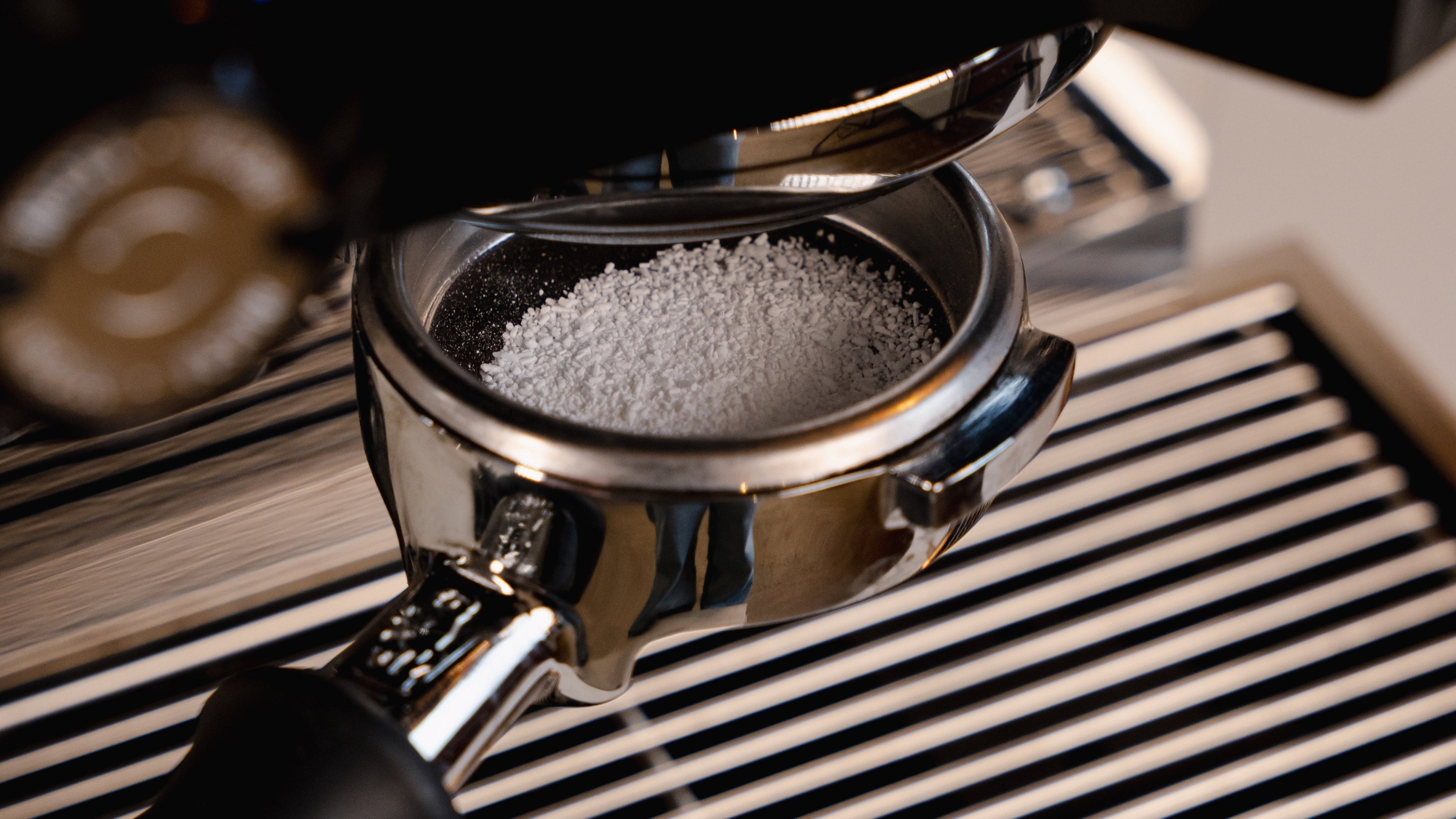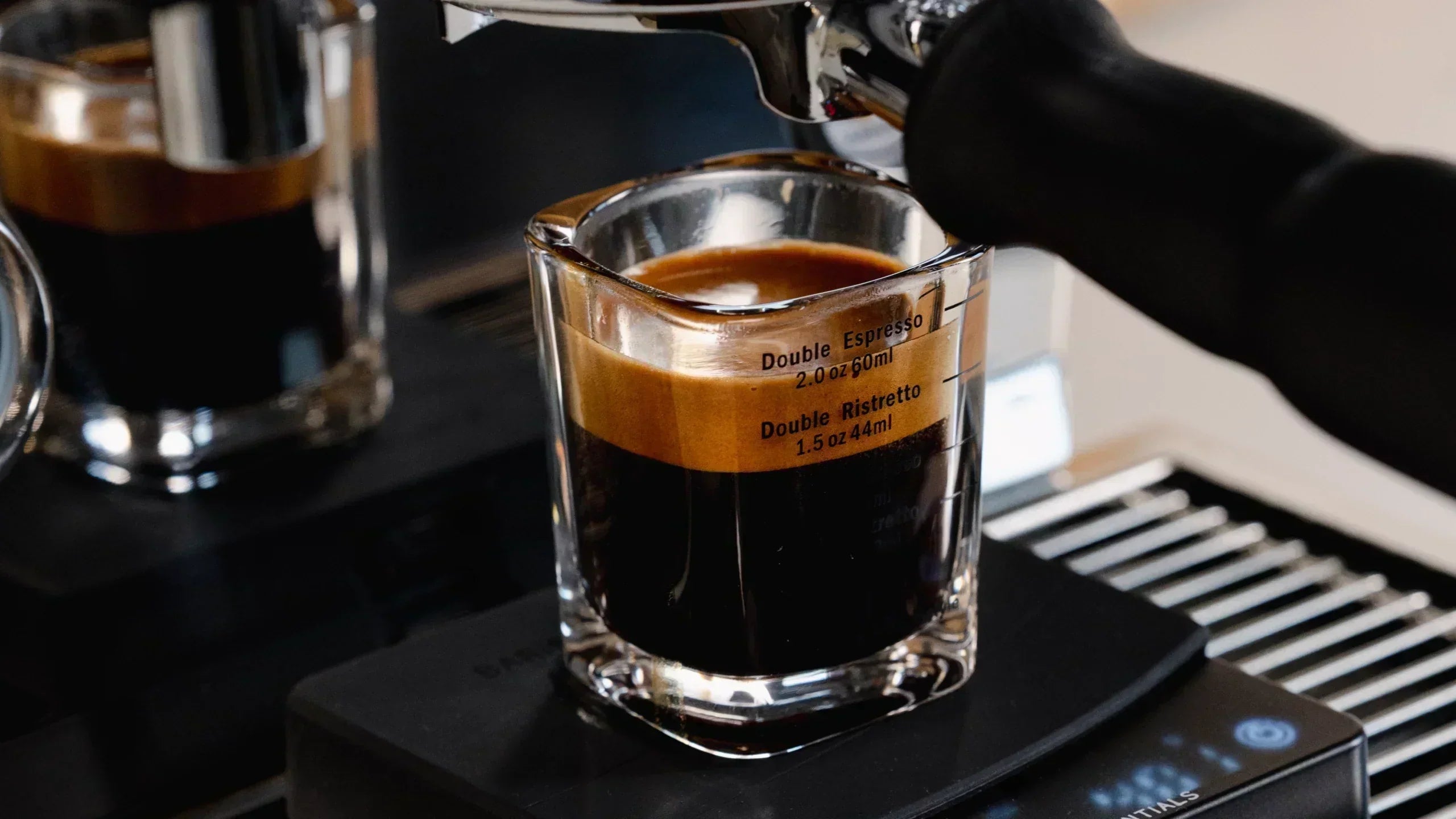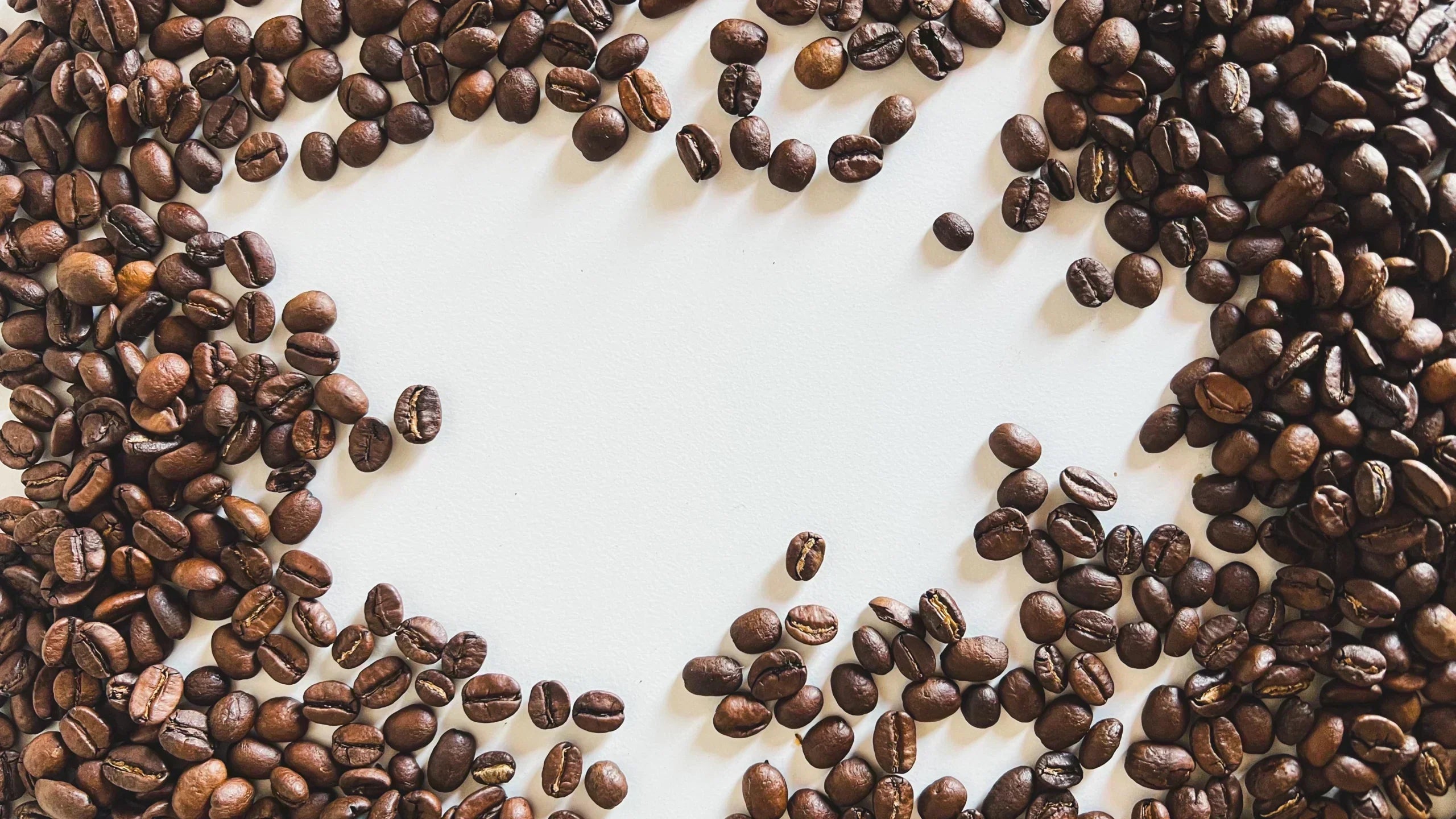Have you just brought home an espresso machine and want to get the most out of your coffee? With a few handy accessories, you can not only make better espresso, but also make the brewing process more fun and easier.
Which barista accessories are really worth it for a (beginning) home barista? We’ve put together our top 8 tools to help you improve your skills step by step.
1. Coffee Scale
When I first started using my new espresso machine, I basically just guessed how much coffee to use. I’d grind enough to fill the portafilter and scrape off the excess.
Here’s what introducing a coffee scale changed for me in that process:
Accuracy: When it comes to making great coffee, finding the right ratio of ground coffee to water is key. Read more about making the perfect espresso here.
Consistency: Once you’ve found your ideal coffee-to-water ratio, a barista scale lets you repeat it every time for consistent results.
Less waste: When grinding by eye, it’s easy to end up with more coffee than you actually need, leading to waste. By weighing exactly what you use, your fresh coffee beans last longer.
Experimentation: A barista scale allows you to play around with different espresso brew ratios until you find your perfect shot.
2. Dosing Ring
Getting a new espresso machine also means learning the art of grinding beans. We all know the feeling: you fill the hopper, start grinding, and suddenly there’s a mountain of coffee piled up in your portafilter.
One wrong move and that precious pile ends up in the drip tray or all over your countertop.
By placing a dosing ring on the edge of your portafilter, you create an extra wall of protection that helps prevent coffee grounds from spilling and going to waste.
3. Coffee Distributor
The importance of properly distributing coffee in your portafilter is often underestimated. When the coffee falls into the portafilter and you tamp it straight away without distribution, you create channeling.
Channeling happens when pressurized water finds the weakest spots in your coffee puck and flows through them into your cup. The result? Weak coffee and uneven extraction.
Our advice: before tamping, use a coffee distributor to make sure your grounds are evenly spread. This helps create a uniform coffee puck, allowing the water to flow through it evenly and improving the taste of your espresso.
4. Tamper
Your tamping technique is an essential part of making a great espresso, but it’s also a skill that takes some practice, especially when you’re using an entry-level machine. The plastic tamper that usually comes with your espresso machine leaves a lot to be desired.
When using a standard tamper, the consistency of your tamp depends largely on your own strength and precision. As an upgrade, we offer high-quality tampers in black, wood, or stainless steel.
5. Naked Portafilter
Chances are, your espresso machine came with a portafilter that has a double spout and a closed bottom.
While this type has its advantages, like letting you split a double espresso into two shot glasses, it doesn’t allow you to fully see the quality of your extraction.
A bottomless portafilter, also known as a naked portafilter, is exactly what it sounds like: a portafilter with the bottom removed.
The extraction process itself is the same as with a regular one, but without the spouts, you can actually see what’s happening underneath, giving you a clear view of how evenly your espresso is being extracted.
6. Tamper Mat
A simple but effective barista accessory is the tamper mat. The benefit of a tamper mat is that it helps you keep your workspace clean and prevents damage to your barista tools.
We offer two types of tamper mats: a corner tamper mat and a flat tamper mat.
The corner tamper mat is placed over the edge of your countertop, protecting it from scratches and keeping the mat securely in place while tamping.
For spots where a corner mat doesn’t fit, for example, if there’s a cabinet in the way, the flat tamper mat is a great alternative. You can place it wherever it’s most convenient for you.
7. Milk Frothing Jug
Pouring a tulip into your coffee cup is a beautiful finishing touch for any home barista with an espresso machine. But what actually makes a good milk frother jug?
The most important thing to look for when choosing one is width. You want a jug that’s wide enough to create a “whirlpool” effect while steaming. This motion breaks down large bubbles and creates silky microfoam (read more about this in our latte art blog).
Most milk frother jugs come in two sizes: 350ml and 550ml. When choosing the right size, think about how much milk you actually need for your coffee.
We recommend having both sizes at home. That way, you always have the right jug on hand and can fine-tune your microfoam by pouring from one jug into another.
For the best value, you can also go for our milk frothing jug set!
8. Knock Box or Knock Drawer
After pulling a great shot of espresso, you need somewhere to dispose of your coffee puck. That’s where a knock box or knock drawer comes in.
Because commercial knock drawers are designed for high-volume use, they’re often too large for home setups. That’s why we developed our mini knock drawer, made specifically for home baristas.
If you’re looking for a more budget-friendly option, we recommend a knock box. It features a rubber surface on the knock bar to protect your portafilter from damage, and a non-slip rubber ring on the base to keep it securely in place while you knock out the coffee grounds.




